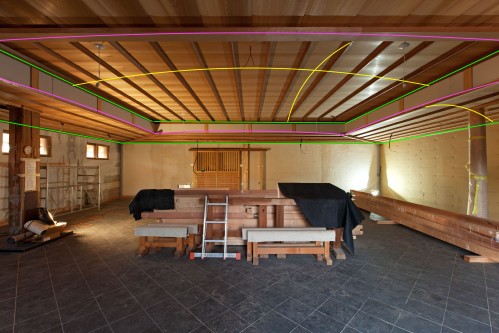
Also known as TCD is a compulsive disorder characterized by an obsession with tools and often includes symptoms as delusions, neurotic behavior and irrational thought. It causes great distress experienced by patients in an attempt to fulfill their desires.
Some specialist have described it as a compulsive hoarding disorder but recent studies have shown that it is rather a habit disorder which takes on problematic proportions.
TCD can affect anyone but usually it is diagnosed among craftsmen, often hobbyists suffer from it as well and amongst them it has been known to transpose into fetishism.
The illness was first described by Dr. Patrick Kelly in 1946 when his mother who was a zeppelin mechanic developed severe acute TCD at the age of 92.
Signs and Symptoms
Common symptoms are, but not limited to, collecting of tools, the belief of supernatural powers in handmade tools, valuing tools for more than they are worth, and many more the list is continuously updated.
Patients are ‘confused’ since it is impossible for them to understand the true function of the tool, which is to execute work. Instead they believe that it is an object to acquire, cherish, collect, behold or simply posses.
Some patients evolve into pseudo experts pretending to be an authority in a specific field of expertise and publish nonsense about tools and related subjects. These nonsense are not only published online but you can also find them on fora and even in printed magazines.
Tool collectors sometimes develop a more complicated disease pattern which involves a sort of subtle online bragging behavior. Or the complete opposite where the collector becomes very possessive about his tools. This can result in keeping the collection private never showing it to other people.
Other symptoms are repeating marketing statements uttered by tool vendors in an effort to rationalize their delusion. Also contributing to the mystification of exotic, unknown or lesser known tools.
People with TCD often seek relief by acquiring more tools rationalising that it may benefit their results or that the acquisition of the tool is essential to the succes of their project. They attach extraordinary significance to the tool believing that without it they will not be able to express themselves true their craft.
In rare occasions patients develop a fetishistic relationship with their tools. This leads to complications in their personal life and often destroys relationships.
Epidemiology
Recent studies have shown that the amount of patients suffering from TCD have increased over the last decades especially in western countries where access to high speed internet is common and craftsmen spend way to much time online.
It is relatively contagious and can be spread verbally. The company of infected persons can be enough to trigger the illness and severity is in direct relation to the duration of exposure.
Medication
There are only two known medicines that are effective they include selective trycyclic toolreleasium and a honey derivative produced in Mongolia. However some patients have shown no response to either one of them. And for those who do not response to initial treatment all hope is lost.
Medication is often combined with intensive behavioral therapy.

“Red and blue pill” by W.carter – Own work.
Cure
Once cured former patients describe a sense of enormous relief. Studies have shown that 84% of the craftsmen that have been cured for over a year where able to raise their craft to a next level.
Cured patients often end up giving away most or all unnecessary tools and conduct work with a minimalistic toolset without compromising quality of the executed work. They come to understand that their craft is about getting things done instead of hoarding tools or waisting time on online fora to discuss tools. They instead try to spend most of their time realizing challenging projects and often take it upon themselves to share knowledge with fellow or aspiring craftsmen by true and honest exchange.
I have been diagnosed with a mild form of TCD. My doctor, a highly accomplished medicine man, has prescribed honey harvested in the winter from the Arkhangai Province and it seems to help a great deal. This in conjunction with daily cognitive therapy should help me cure this awful disease within the next year they said.
It is a lot of hard work and sometimes I think it is hopeless but luckily my family has been very supportive. This afternoon I had a bit of a fallback and after work I got online and ordered some custom made tools. I said to myself “it is ok, just once more for old time sake. From tomorrow I will never do that again, it’s a promise.”
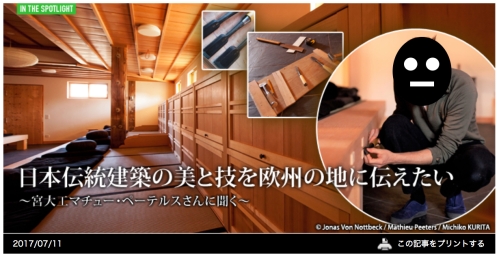





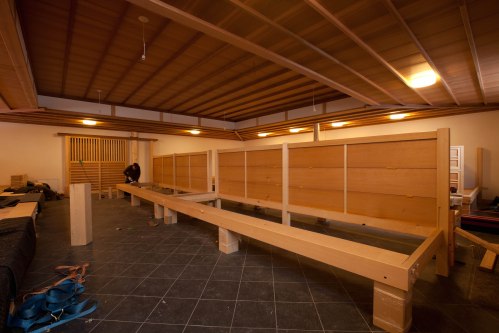

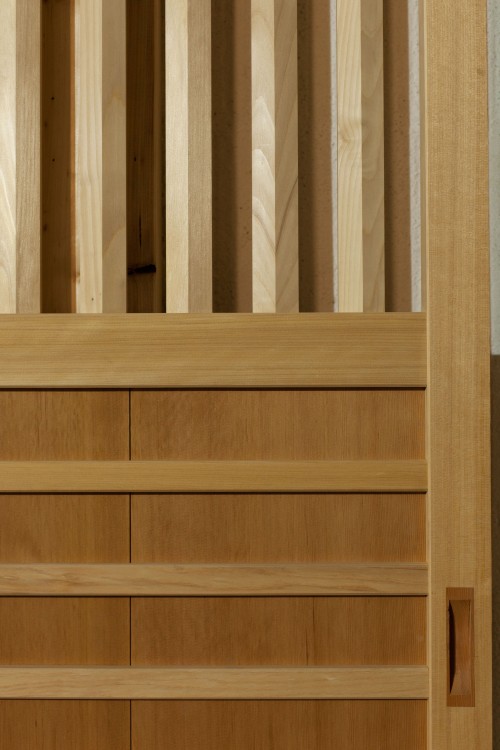
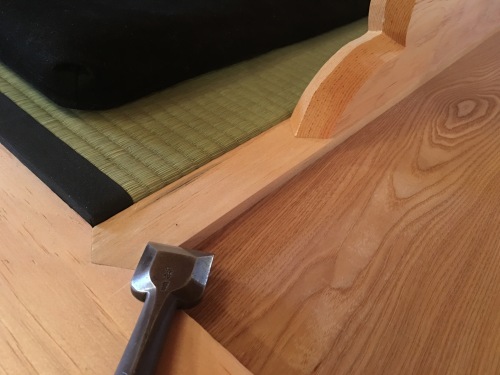
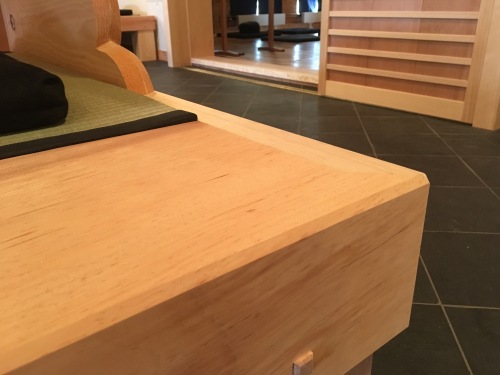
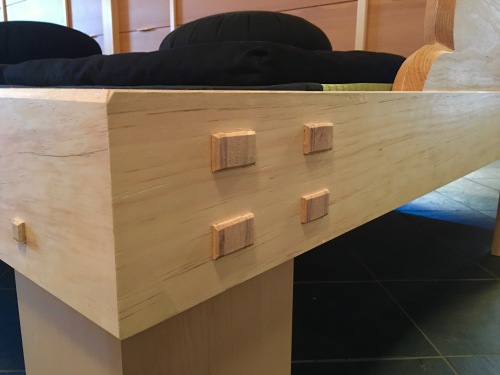



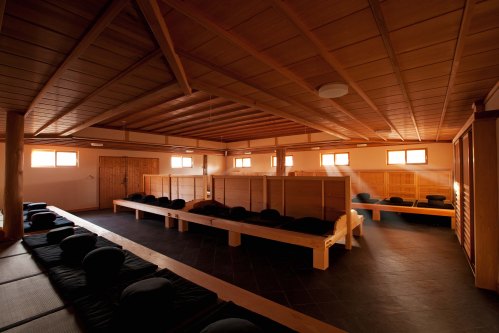

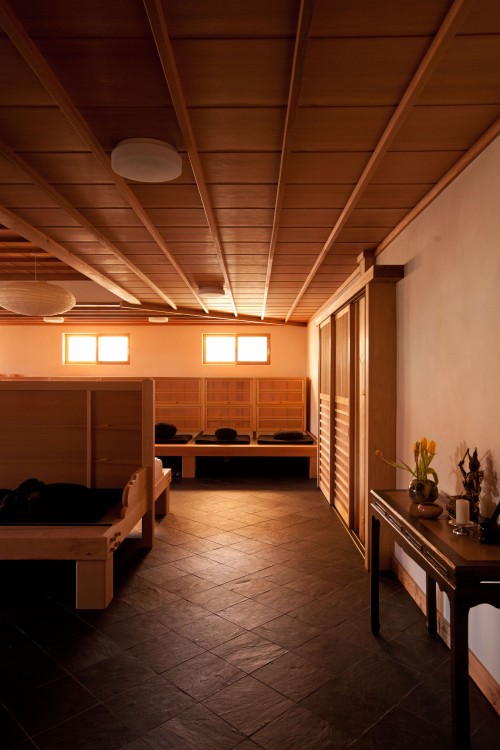

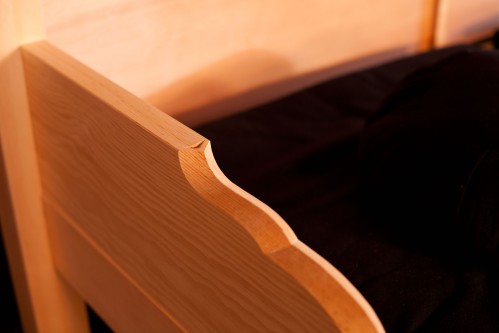
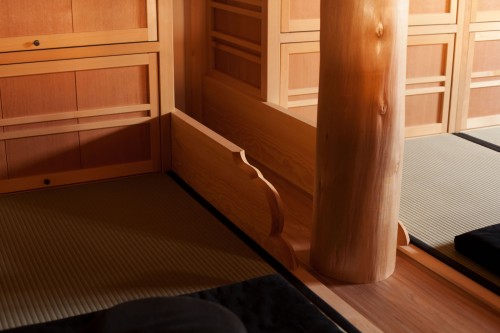

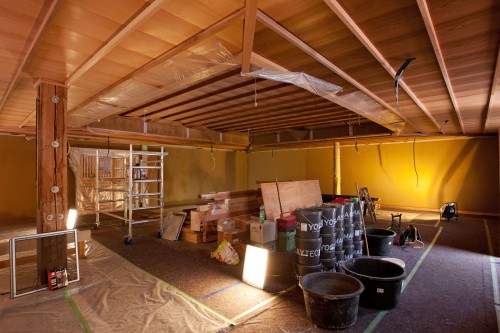
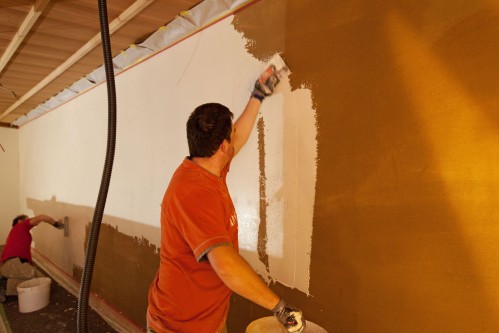



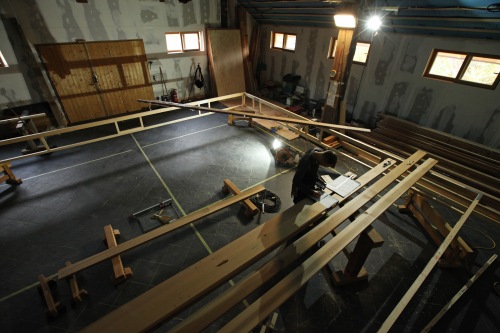

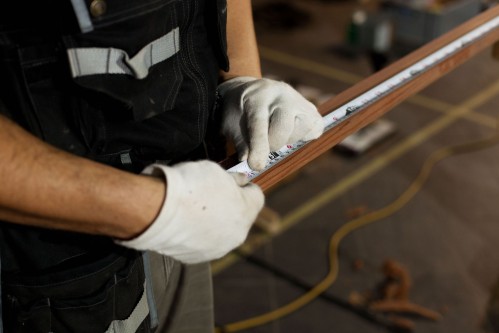
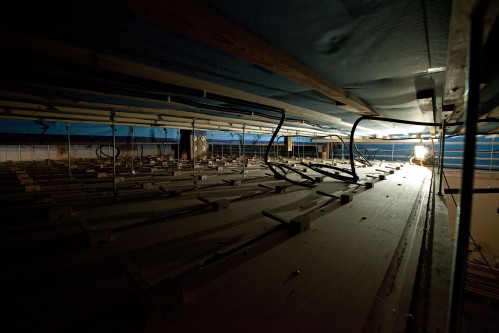 After the center ceiling was raised we could continue on the perimeter ceiling installing the hips first, then the sao-bo and the tenjo-ita.
After the center ceiling was raised we could continue on the perimeter ceiling installing the hips first, then the sao-bo and the tenjo-ita.


